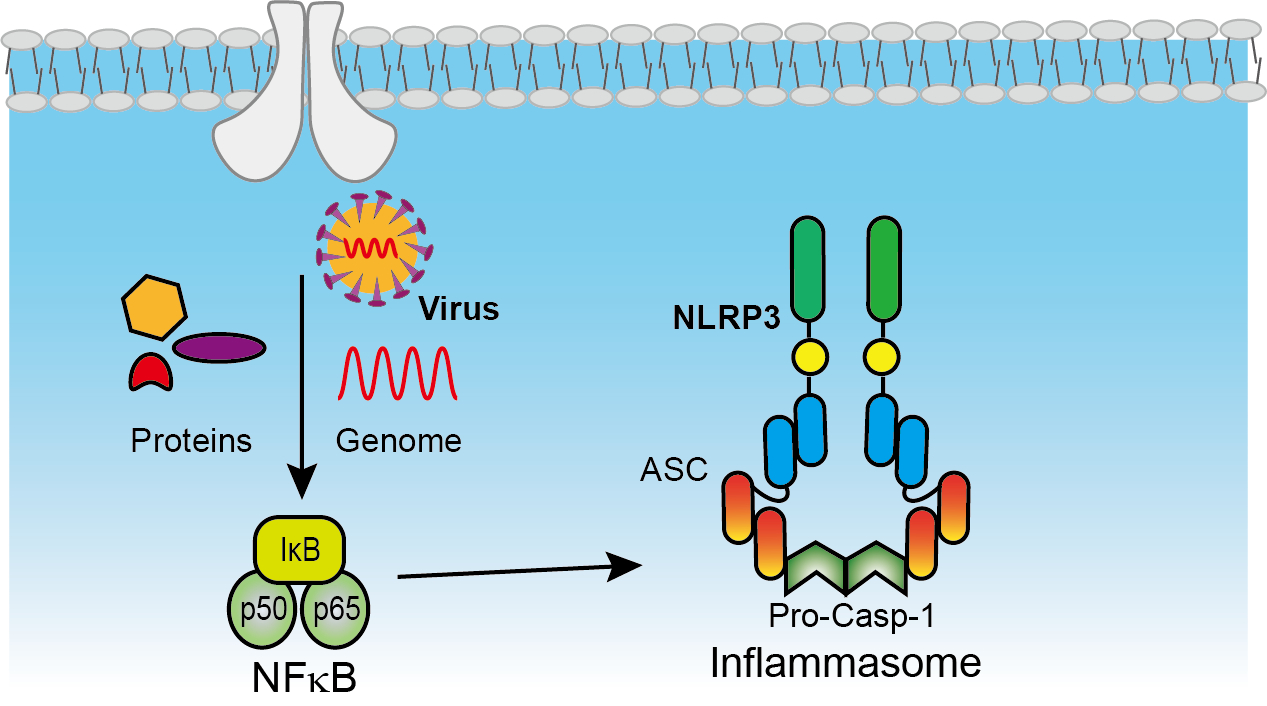HEV infection caused liver diseases are closely related to dysregulation of immune responses, especially inflammatory response. Macrophages play a central role in immunosurveillance of the healthy liver and in initiating inflammatory response when encountering pathogen invasion. Inflammasome activation is a hallmark for the pathogenesis and progression of many inflammatory diseases. A recent study by the research group of Dr. Qiuwei Abdullah Pan from Erasmus University Medical Center, the Netherlands has reported the activation of NLRP3 inflammasome by HEV infection.
Currently, the best-characterized inflammasome is the NLRP3 inflammasome. Full activation of the NLRP3 inflammasome usually requires two signals. The priming signal is triggered by various pathogen-associated molecular patterns or damage-associated molecular patterns, which induce the synthesis of pro-IL-1β and NLRP3 through activation of NF-κB. The second signal triggers assembly into the NLRP3 inflammasome complex, leading to caspase-1 autoactivation, cleavage of pro-IL-1β, and release of the mature IL-1β.
This research has provided compelling evidence that HEV infection, in rabbits and patients, activates inflammasome response showing the elevation of IL-1β in serum samples. They further demonstrated macrophage as a key cell type in initiating the NLRP3 inflammasome in response to HEV infection in cell culture models. Activation of inflammasome and antiviral interferon responses can happen simultaneously during viral infection. The researchers found that HEV genomic RNA is responsible of activating interferon response, whereas HEV particles are responsible for activating inflammasome responses.
So far, therapeutic development against HEV infection has primarily focused on inhibiting the virus with antiviral agent, such as ribavirin. The authors postulate that an antiviral agent alone is insufficient for treating severe acute HEV infection, because of massive inflammatory response. There is an interesting lesson learned from treating severe COVID-19 patients with steroids, which can inhibit NLRP3 inflammasome and has been shown to significantly reduce COVID-19 mortality. In this study, by using a co-culture model of HEV-infected liver cells with macrophages, the researchers demonstrated a proof-of-concept of combing steroids with ribavirin to simultaneously inhibit HEV replication and inflammasome activation.
In summary, this study demonstrated activation of the NLRP3 inflammasome in macrophages by HEV infection. These findings are essential for a better understanding of HEV-host interactions and the pathogenic mechanisms of HEV infection, and developing new therapeutic approaches targeting both the virus and inflammation.
This study was conducted in close collaboration with Dr. Yijin Wang from Southern University of Science and Technology, China; and Dr. Lin Wang from Peking University Health Science Centre, China. It is published in Hepatology in January, 2022. Publication link: https://aasldpubs.onlinelibrary.wiley.com/doi/10.1002/hep.32114

